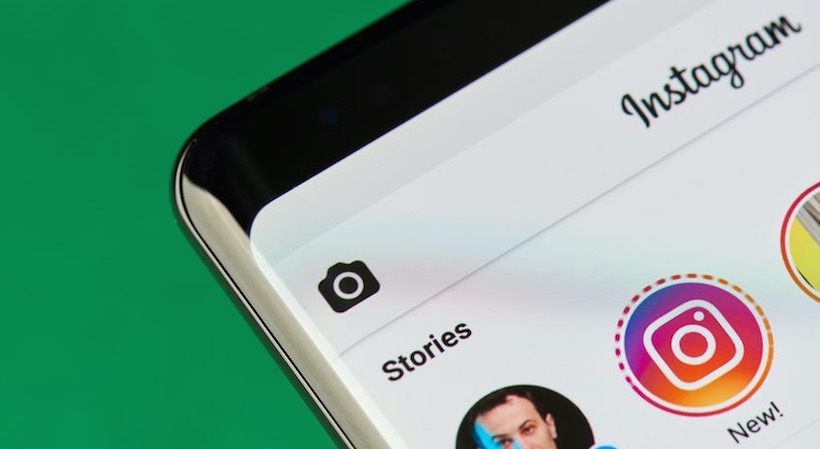Instagram Stories are a continually growing and popular part of Instagram. With 500 million daily active users on the platform, brands of all sizes are beginning to see the benefit of using Instagram Stories to reach their audience. But after you’ve posted your Instagram Story, how do you measure the results, and more importantly, how do you know what is working and what isn’t?
Understanding your Instagram Story insights is key to developing a powerful Instagram marketing strategy for your business.
StartupNation exclusive discounts and savings on Dell products and accessories: Learn more here
Where to find Instagram Story insights
All business profiles have access to Instagram Story insights for up to 14 days after they’re created. There are two quick and easy ways to view your Story metrics.
Current Stories
You can view some high-level analytics of any Stories you currently have uploaded to your Instagram account. On your profile, tap on your profile photo to bring up your Stories.
Then tap on the bottom left-hand corner to view the analytics for that particular Story.
Next, tap on the bar graph icon to view some quick stats, including interactions, impressions, follows and more.
Current and Past Stories
To locate analytics for all Stories (posted within the last 14 days and further back), click on the hamburger menu in the upper right-hand corner on your profile page.
From there, click on “Insights.” This will bring you to a page where you can view insights for your Stories, as well as your Instagram posts.
To view the analytics for your Stories, scroll down until you see the “Stories” section. Lastly, click “See All” to view the most recent data from the last 14 days.
You can then change the metric you would like to view by tapping on any of the words highlighted in blue, as seen below:
Doing so will bring up a list of different metrics to filter your data.
Related: How to Tell Your Brand Story on Social Media (and Why You Should)
Instagram Story insights explained
Understanding each of the metrics will help you develop a successful strategy for measuring your Instagram Stories performance. Your business goals will ultimately determine which metrics will be most relevant to your business.
For example, if your goal on Instagram is to grow your presence and increase your reach, you might be more focused on the number of follows generated from your Stories. However, if gaining leads and prospects is more aligned with your goals, you’d want to focus on metrics that show the user has taken action to get in touch with you (metrics such as Calls, Emails or Replies, which we’ll go over next).
Engagement metrics
The following metrics can help you understand whether your Instagram Stories caused your audience to engage by completing any of the following actions:
- Calls
- Emails
- Get Directions
- Replies
- Website Clicks
- Link Clicks
- Follows
The difference between website clicks and link clicks is that link clicks are referring to the number of “swipe ups.” The “swipe up” feature is currently only available to accounts with over 10,000 followers, so unless you’re able to add links to your Instagram stories, you won’t see that metric.
Website clicks, on the other hand, refer to the number of clicks on the link in your Instagram profile bio as a result of your Instagram Story traffic.
Navigation metrics
These metrics will give you a better understanding of your audience’s behavior when viewing your Stories. It can help you understand what kind of content your audience enjoys seeing from you, and what they don’t connect with as much.
Back
When someone clicks “back” on your Instagram Story, it means they wanted to view it again. A high number of backs could indicate that your audience was interested in what you had posted and wanted to see more of it!
Forward
When a user taps “forward,” it means they are viewing your next Story before the current one has been completed. Instagram users sometimes tap through Stories to watch as many as possible within a short time-frame. If you posted a Story that contained important information, a high number of forward taps could mean that your audience didn’t read or digest the information in its entirety on your Story.
Forward can also help you identify the optimal number of Stories to post within 24 hours. If the taps forward increase with the number of Stories you post, you might be posting too many Stories. By tracking your forward taps, you’ll have a better understanding of how much Story content to plan for the week ahead.
Tip: If your business posts lots of video content and you notice your audience is tapping forward, it could be because they don’t have sound on and aren’t able to hear your videos. Consider using an app to automatically add captions to your videos so that those who don’t have their sound on, or who are hearing impaired, can still enjoy your content!
Next Story
The “Next Story” metric is when a user swipes out of your Story queue and onto the following account’s Stories.
A high Next Story count could mean that your content wasn’t relevant to your audience. It could also indicate that your account posted too many Stories and your audience didn’t want to tap forward through all of them.
You can use the Next Story metric, along with the Forward metric, to paint a better picture of how your audience is interacting with your Stories.
Exited
Exited tells you how many people have stopped watching your Stories entirely. A high number of exits doesn’t necessarily mean that your content wasn’t interesting to your audience. It could simply mean that they were done scrolling through Instagram for the day, so take this metric with a grain of salt.
Exited is different from Next Story, as Next Story indicates that the user was still watching Stories but decided to forgo yours in favor of the next account’s Stories. Exit means that the user didn’t continue watching any Stories after closing yours.
Follows
Growing your Instagram with targeted followers is something all business accounts want to do. By tracking what kind of Stories resulted in the highest number of followers, your business can try to replicate the success of past Stories (and the content within those Stories) to grow your Instagram following.
Impressions
Impressions are the number of views your Instagram Story received. Impressions are not unique, meaning that if the same person sees your Story five times, it will count as five Impressions rather than one.
Reach
Unlike Impressions, Reach is a unique number and represents the number of people who viewed your Instagram Story. From the example above, if a user views your Story five times, it will be counted as five impressions, but the value of Reach will only be one.
If your impressions are greater than your Reach, it could mean that your Story was interesting enough for people to view multiple times!
Profile Visits
A high number of Profile Visits could mean that your audience liked what they saw through your Story content and either want to follow your account (if they didn’t already) or learn more about your company’s products or services.
Sign Up: Receive the StartupNation newsletter!
In conclusion
Your Instagram Insights can provide your business with a deeper look into your Instagram Stories strategy. Knowing what each metric means will allow you to create content for your business that your audience will love, and more importantly, act upon after viewing!













